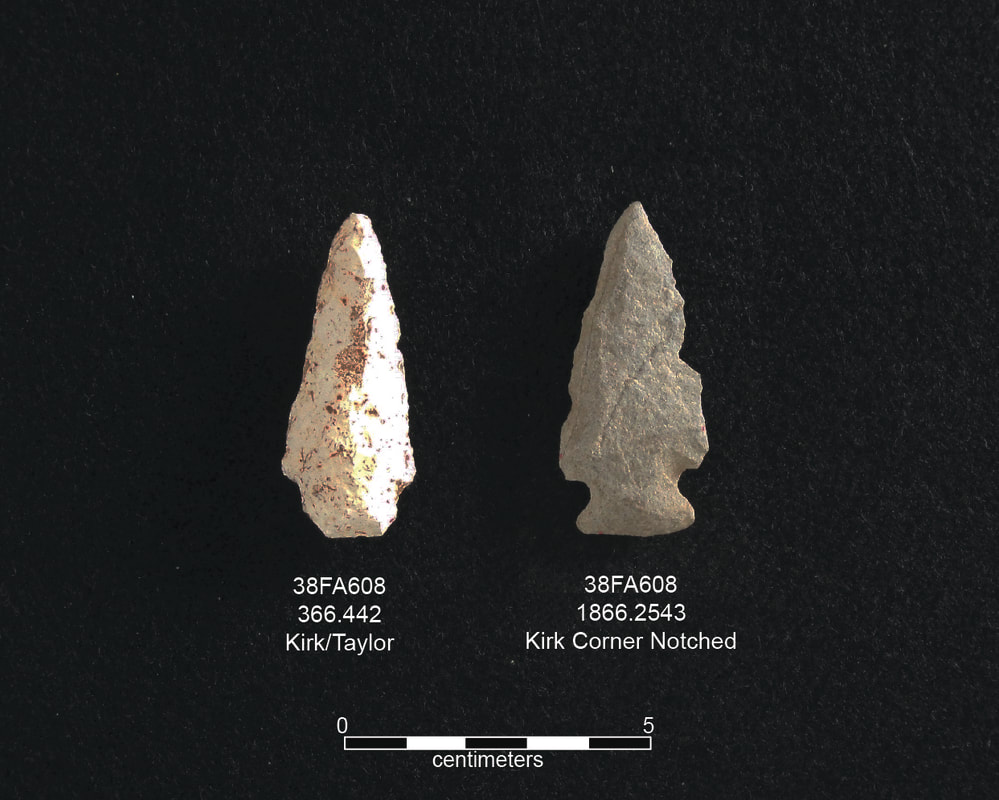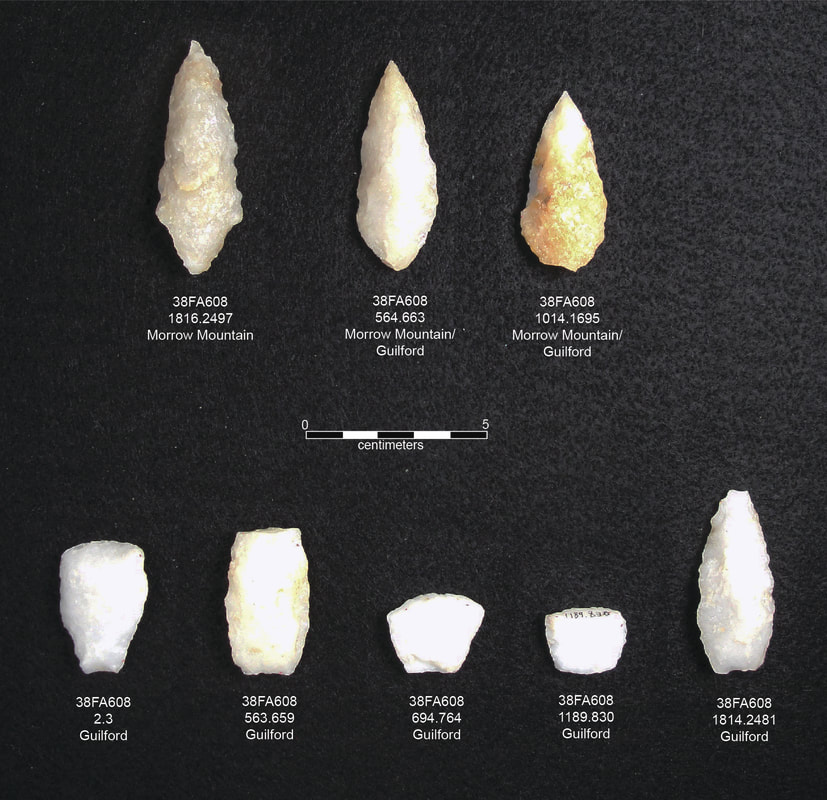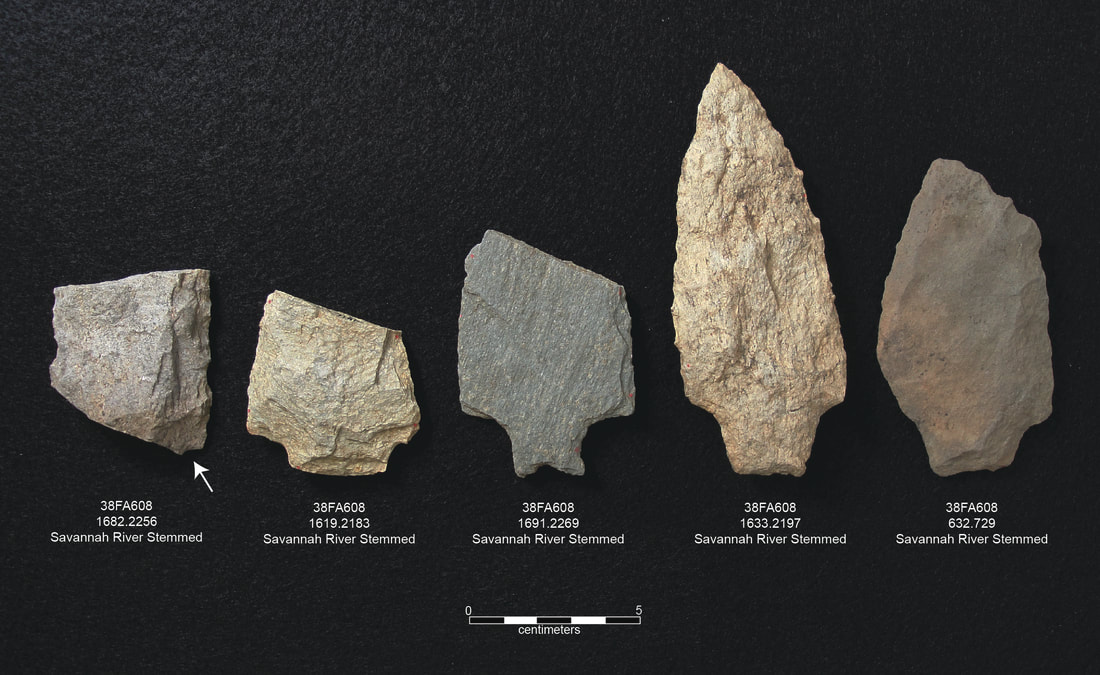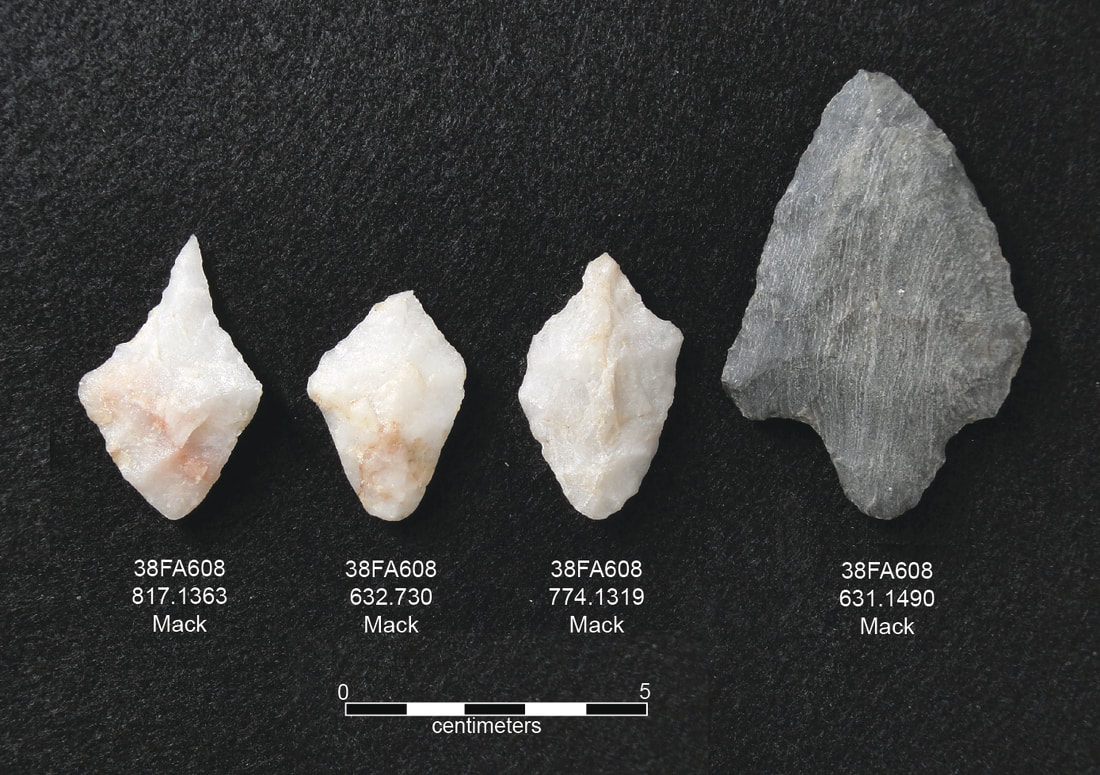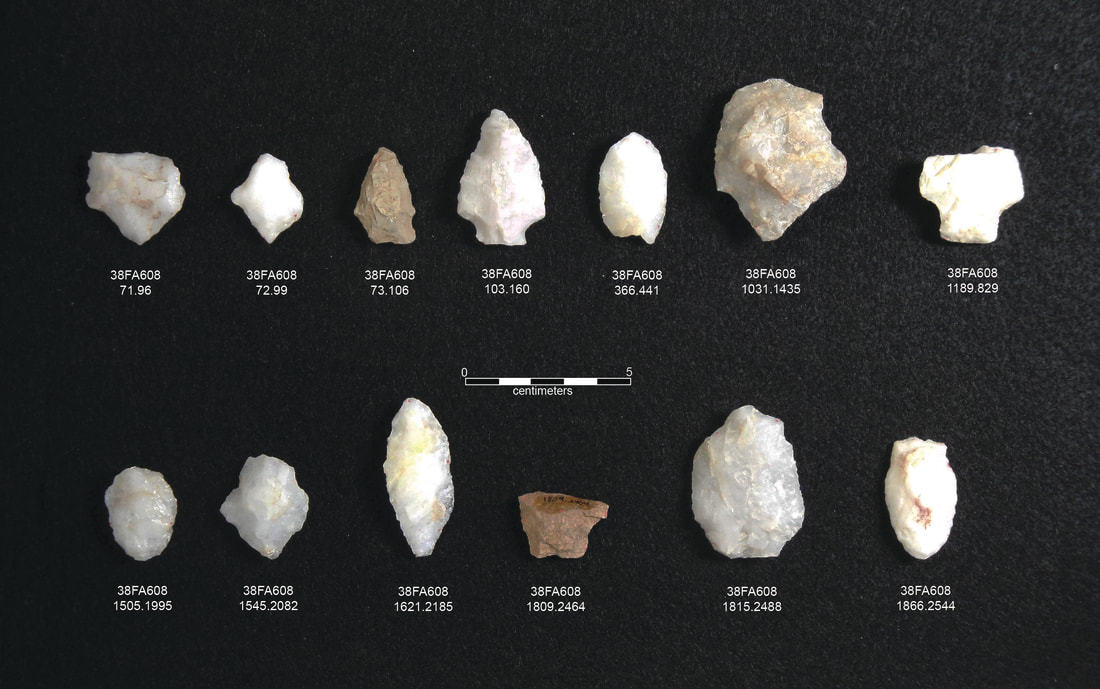Projectile Points
Stone projectile points remain among the most useful classes of artifacts for learning about human behaviors during the Archaic period in the Eastern Woodlands. Not only can they give us with valuable insights into the activities of ancient peoples, but they can provide us with important information about the ages of archaeological deposits that we're investigating at sites like 38FA608.
This section of the website provides links to 3D models of the projectile points recovered from 38FA608.
This section of the website provides links to 3D models of the projectile points recovered from 38FA608.
Early Archaic
|
Two notched Early Archaic points have been recovered from the vicinity of 38FA608. One of these (366.442) was discovered by the landowner while walking a dirt road to the north of the excavation area. The other (1866.2543) was discovered on the surface by Albert Goodyear in a disturbed area of the site near our excavation units. While this second point was not found in situ, its presence in the immediate vicinity of an area where buried deposits dating to the Middle Archaic have been identified strongly indicates the presence of a buried early Holocene component at 38FA608.
|
|
|
|
|
Middle Archaic
|
The Middle Archaic assemblage from 38FA608 includes 1 point typed as Morrow Mountain, two points typed as Morrow Mountain/Guilford, and five points typed as Guilford. The assemblage also includes several untyped points that were recovered in situ from deposits that are Middle Archaic in age. In addition, several fragments of stemmed points recovered from disturbed/surface contexts may also date to the Middle Archaic occupations of 38FA608. Given the presence of a Terminal Archaic Mack component at 38FA608, however, care needs to be taken when assigning ages to out-of-context stemmed points found at the site.
|
|
|
|
|
|
|
|
|
|
|
|
|
|
|
|
|
Late Archaic
|
The Late Archaic assemblage from 38FA608 includes five points that fit within the range of variation included in the Savannah River cluster (as discussed by Justice 1987:163-167 and Charles and Moore 2018:53-54). Savannah River points are generally large points with broad blades and relatively short stems. Stems are generally straight-sided, but points with contracting stems and points with flaring stems also occur. All of the Savannah River points recovered from 38FA608 thus far come from excavated contexts.
|
|
|
|
|
|
|
|
|
|
|
Terminal Archaic
|
The Terminal Archaic assemblage from 38FA608 includes several examples of Mack points found in excavated contexts. It may also include some (or all) of the fragmentary stemmed points recovered from disturbed/surface contexts. Given the presence of Middle Archaic (Morrow Mountain and Guilford) components at 38FA608, however, care needs to be taken when assigning ages to out-of-context stemmed points found at the site (discussed further below).
|
|
|
|
|
|
|
|
|
Woodland/Mississippian
Two triangular projectile points dating to the Woodland or Mississippian periods have been recovered from 38FA608. Both of these were in the upper deposits at the site, specifically Zone 3 (the lower plowzone).
|
|
|
|
Untyped/Indeterminate
|
Thirteen points recovered thus far from 38FA608 have not been assigned to a specific type. While the general ages of some of the points are known based on their stratigraphic position, others were found in disturbed portions of the site. The fragmentary nature of some of these points makes age and type determinations difficult.
|
|
|
|
|
|
|
|
|
|
|
|
|
|
|
|
|
|
|
|
|
|
|
|
|
